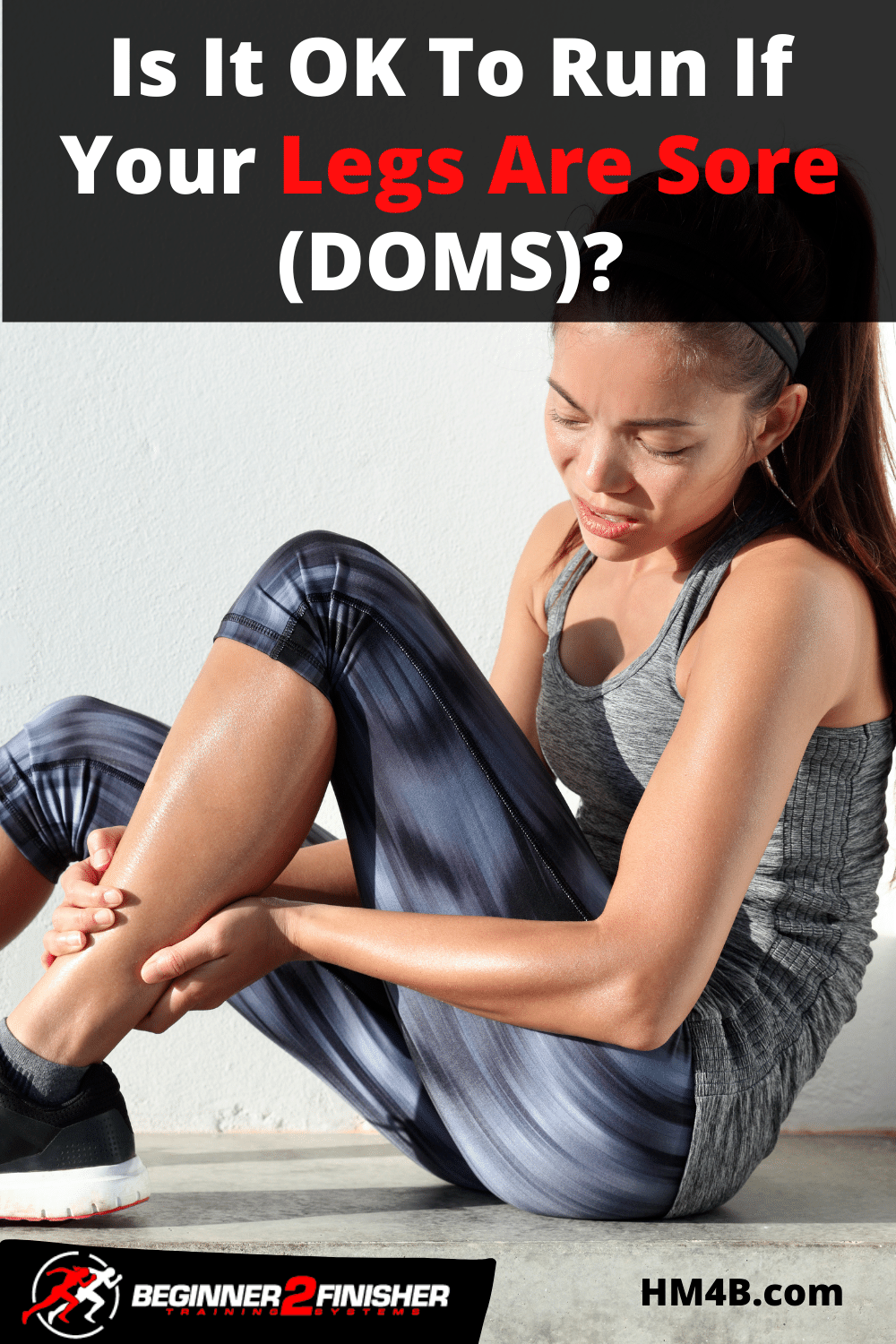Introduction
If you’re a keen runner, the chances are that you’ll suffer from DOMS at points, and you may be wondering whether it’s safe and sensible for you to keep running when you are.
Many runners push too hard and end up injuring themselves, but equally, if you stopped at the first twinge, you’d almost never run!
What Is DOMS?
Delayed Onset Muscle Soreness (DOMS) is something most runners will suffer from at some time or another – it’s the stiffness you will usually feel for a couple of days after doing a workout. It comes from muscles being worked and strengthened, and from tiny tears in them as a result.
DOMS is not the same as torn or pulled muscles, which are accompanied by more significant pain. It’s usually just a feeling of discomfort.
Is DOMS Caused By Lactate Buildup?
No, DOMS is not caused by lactic acid in your body. Lactic acid is responsible for the burning sensation you may feel when exercising hard, but it’s not the cause of any post-workout discomfort.
Lactic acid is produced when you aren’t able to get enough oxygen to your muscles (anaerobic); it breaks down glucose, which provides the muscles with energy without needing oxygen.
You shouldn’t feel any after-effects from it, though sore muscles are common if your workout has been intense enough to trigger this.
What Are The Benefits Of Running With Sore Legs?
It’s thought that running while you’re feeling sore – no matter how little you want to – will actually help you to feel better. You should go for a light, easy run, and not push too hard.
Doing a gentle run will help encourage the blood flow in your legs, which is good for promoting healing.
It also encourages you to think about running as a daily activity, and not slack off because you don’t feel like it.
Does Running Help DOMS?
Yes, a gentle run can help to ease some of the stiffness associated with DOMS and may reduce the pain. If you are suffering from serious DOMS, you may find that a slow jog or even a walk is better.
You won’t damage your muscles by running, but you may find that they are not up to much because the cells in your muscles are slightly damaged – and that makes it harder to run. Go for light, easy workouts for a few days until the soreness eases.
How Do You Know When Running Through Pain Is A Bad Idea?
You need to learn how to listen to your body because it can be hard to know when to stop and when to keep going. Many runners feel they should keep going no matter what – perhaps because of the idea that we can run off soreness if we just keep pushing.
However, this can lead to serious running-related injuries. The best way to tell that you’re pushing too hard is that the pain will be significant, sharp, and often associated with a specific movement. It is not the same as soreness.
What Are The Actual Muscles That Should Be Sore After A Run?
You might think it would just be your legs, but many muscles are used when running, and any of them can get sore. You may notice soreness particularly in your hips, calves, hamstrings, and quads – but don’t be concerned if other parts feel a little tender too.
How Do You Relieve DOMS?
There are quite a few strategies to reduce DOMS. One is to cool down at the end of the workout. Give your muscles a chance to return to their normal length while still providing plenty of blood flow by doing some gentle stretches and moving about. Don’t just stop.
Do light activity even on your rest days. This does mean light – just don’t turn into a couch potato. Consider a brisk walk or short swim.
Related: 10 Ways To Improve Your Walking Speed
A hot bath can help too; it relaxes the muscles and helps them recover by increasing blood flow. Epsom salts are thought to help with muscle regeneration by providing magnesium.
Eating well is also a good way to ensure your body has what it needs to heal your muscles effectively, so don’t pile on junk food just because you’ve exercised.
Do Recovery Runs Help With DOMS?
Yes, an extremely slow-paced run for 20-30 minutes can be effective in relieving your sore legs. Try to run at a pace 2 minutes slower than your marathon pace. Yes, this is a slow pace, but a recovery run is meant to help you recover in the training cycle – not advance your performance.
Related: What Is A Recovery Run?
Do Compression Socks Help with DOMS?
The scientific jury is still out as to whether compressions socks help to reduce soreness. Many elites athletes swear by their use. I have personally worn compression socks during a few of my half marathon races. The compression socks seemed to shorten the number of days my legs were sore. However, the soreness was still present to about the same degree of uncomfortableness.
For a detailed post about other possible compression sock benefits, check out: Benefits of Wearing Compression Socks For Runners
Does SMR (Semi-myofascial Release) Foam Rolling Relieve DOMS?
This might be the best way to reduce DOMS. SMR if performed properly can help release tightness in your muscles. It may not feel comfortable – you will often be pressing on muscles that feel tender or even sore – but it will release the tension and help to work out knots. It also increases blood flow, promoting healing. Many people use a foam roller as part of their cool-down routine, or as part of a rest day.
To perform SMR correctly:
- Lightly roll your muscles around on the foam roller or trigger ball until you find the sore spot
- Once you find the sore spot press into the tight spot with your weight
- Hold for 30 seconds
- Release the hold and wait 2-3 minutes and repeat if necessary.
This little guy is my best friend when it comes to compactness and effectiveness in relieving tight sore muscles: Trigger Point Massage Ball For Runners
Conclusion
It’s not a problem to run if your legs are sore because of DOMS, and indeed it may even help alleviate stiffness. However, if you notice a real, sharp pain in a specific, localized place, you should stop and consult your doctor before continuing to run, or you might injure yourself seriously.
Related: What To Expect Running Your First Half Marathon – Mile By Mile!
| Help support me and subscribe to my YouTube channel. YouTube video - 30 ways to make your runs less painful! Coach Scott's Credentials:
|
To sign up for a FREE half marathon training schedule, log sheet, and pace predictor CLICK HERE.

Recommended gear for runners
Connect with me:
| facebook.com/BeginnerToFinisher/ |
References
https://blog.mapmyrun.com/when-running-through-pain-is-bad/
https://www.runnersworld.com/health-injuries/a33650187/delayed-onset-muscle-soreness/
https://www.verywellfit.com/how-to-deal-with-muscle-soreness-after-running-2911377
https://blog.movegb.com/10-ways-to-ease-your-doms



3 thoughts on “Is It OK To Run If Your Legs Are Sore (DOMS)?”